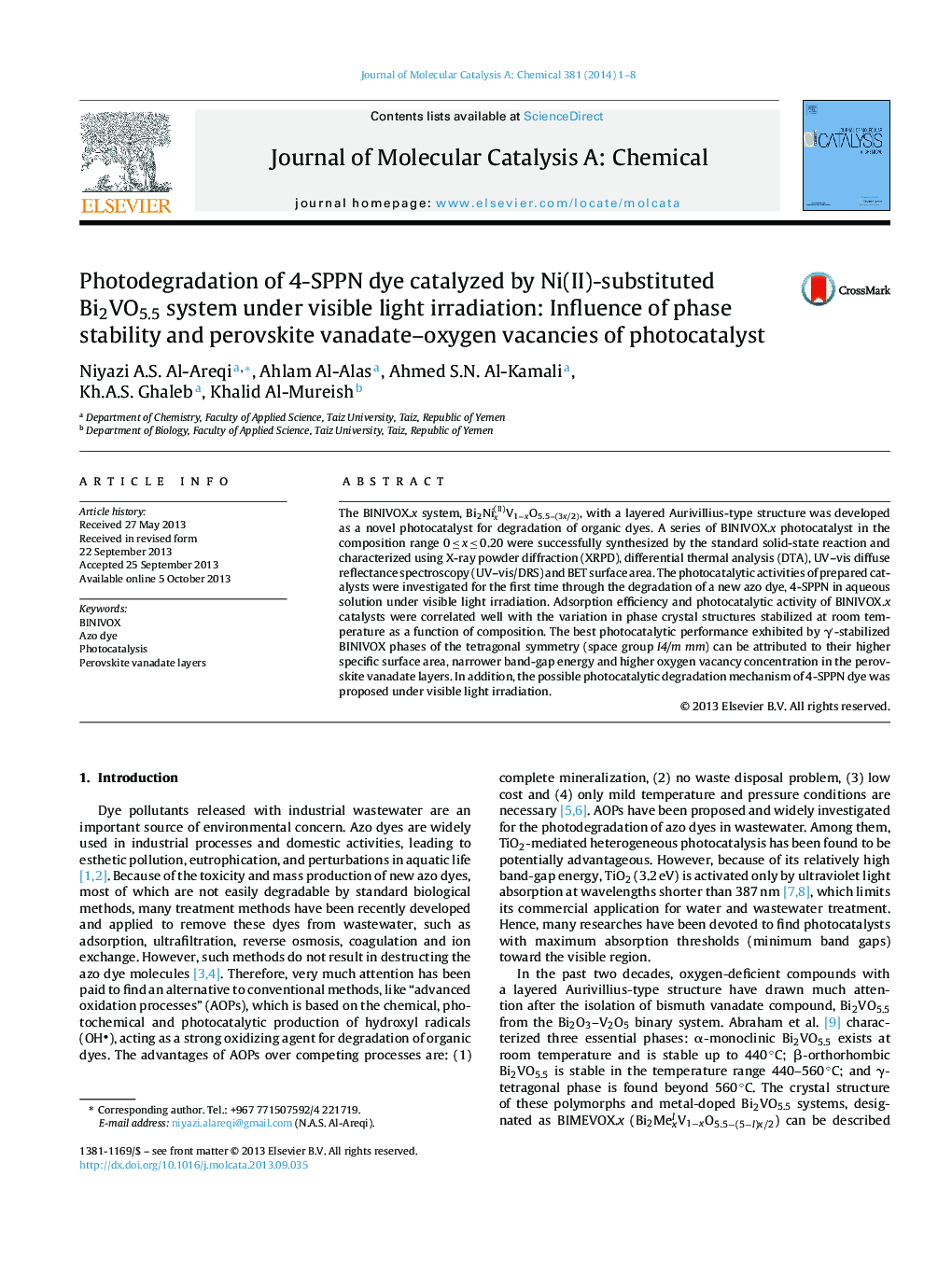| Article ID | Journal | Published Year | Pages | File Type |
|---|---|---|---|---|
| 65461 | Journal of Molecular Catalysis A: Chemical | 2014 | 8 Pages |
•Novel BINIVOX photocatalyst with Aurivillius-perovskite layers was developed.•Adsorption and photocatalysis were correlated with crystal structure of BINIVOX.•γ′-phase exhibited best photocatalytic activity under visible light irradiation.•photocatalytic degradation mechanism of aqueous 4-SPPN dye was proposed.
The BINIVOX.x system, Bi2Nix(II)V1−xO5.5−(3x/2), with a layered Aurivillius-type structure was developed as a novel photocatalyst for degradation of organic dyes. A series of BINIVOX.x photocatalyst in the composition range 0 ≤ x ≤ 0.20 were successfully synthesized by the standard solid-state reaction and characterized using X-ray powder diffraction (XRPD), differential thermal analysis (DTA), UV–vis diffuse reflectance spectroscopy (UV–vis/DRS) and BET surface area. The photocatalytic activities of prepared catalysts were investigated for the first time through the degradation of a new azo dye, 4-SPPN in aqueous solution under visible light irradiation. Adsorption efficiency and photocatalytic activity of BINIVOX.x catalysts were correlated well with the variation in phase crystal structures stabilized at room temperature as a function of composition. The best photocatalytic performance exhibited by γ′-stabilized BINIVOX phases of the tetragonal symmetry (space group I4/m mm) can be attributed to their higher specific surface area, narrower band-gap energy and higher oxygen vacancy concentration in the perovskite vanadate layers. In addition, the possible photocatalytic degradation mechanism of 4-SPPN dye was proposed under visible light irradiation.
Graphical abstractFigure optionsDownload full-size imageDownload high-quality image (105 K)Download as PowerPoint slide
